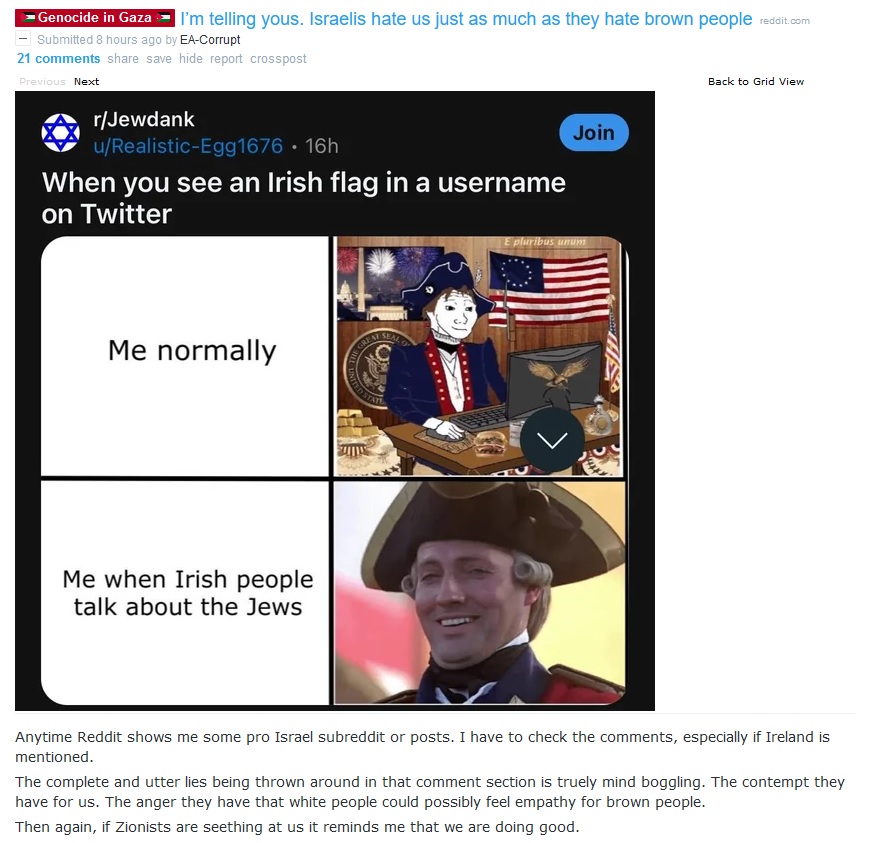this post was submitted on 18 Jun 2024
149 points (100.0% liked)
chapotraphouse
14099 readers
672 users here now
Banned? DM Wmill to appeal.
No anti-nautilism posts. See: Eco-fascism Primer
Slop posts go in c/slop. Don't post low-hanging fruit here.
founded 4 years ago
MODERATORS
you are viewing a single comment's thread
view the rest of the comments
view the rest of the comments

there's some excerpt of a letter in Zinn's Peoples' History around the time of the big canal digging projects of the northeast and it specifically mentions, from a place of shocked elite fear, about how crucial it is to keep the indentured Irish work teams away from the enslaved African teams.
there was this bafflement at how these peoples were so different in appearance and had a language barrier, but were easily finding camaraderie so steps needed to be taken to divide them and actively discourage social mingling.
Oo if you have a link or source id really appreciate it that sounds pretty interesting!
Here ya go (the second letter is the one previously mentioned):
Relevant excerpt from Howard Zinn's 'A People's History of the United States'
The instances where poor whites helped slaves were not frequent, but sufficient to show the need for setting one group against the other. Genovese says:This helps explain the stern police measures against whites who fraternized with blacks. Herbert Aptheker quotes a report to the governor of Virginia on a slave conspiracy in 1802: “I have just received information that three white persons are concerned in the plot; and they have arms and ammunition concealed under their houses, and were to give aid when the negroes should begin.” One of the conspiring slaves said that it was “the common run of poor white people” who were involved.
In return, blacks helped whites in need. One black runaway told of a slave woman who had received fifty lashes of the whip for giving food to a white neighbor who was poor and sick.
When the Brunswick canal was built in Georgia, the black slaves and white Irish workers were segregated, the excuse being that they would do violence against one another. That may well have been true, but Fanny Kemble, the famous actress and wife of a planter, wrote in her journal:
The need for slave control led to an ingenious device, paying poor whites—themselves so troublesome for two hundred years of southern history—to be overseers of black labor and therefore buffers for black hatred.
edit: in case it's helpful, this quote occurs a few pages into Chapter 9: "Slavery Without Submission, Emancipation Without Freedom" (can't give a page number or anything because I've got an EPUB)
Page 176 (2015 edition)
I got a paperback copy
damn, nice find. it was like 15 years ago that i read that (in a physical book), and i was trying to find it on the Zinn site and looking all the way back at the 17th century chapter on early slavery, which has similar stories but wasn't the one i was looking for (the one you found). but anyway, here's another cool bit:
Chapter 2: Drawing the Color Line